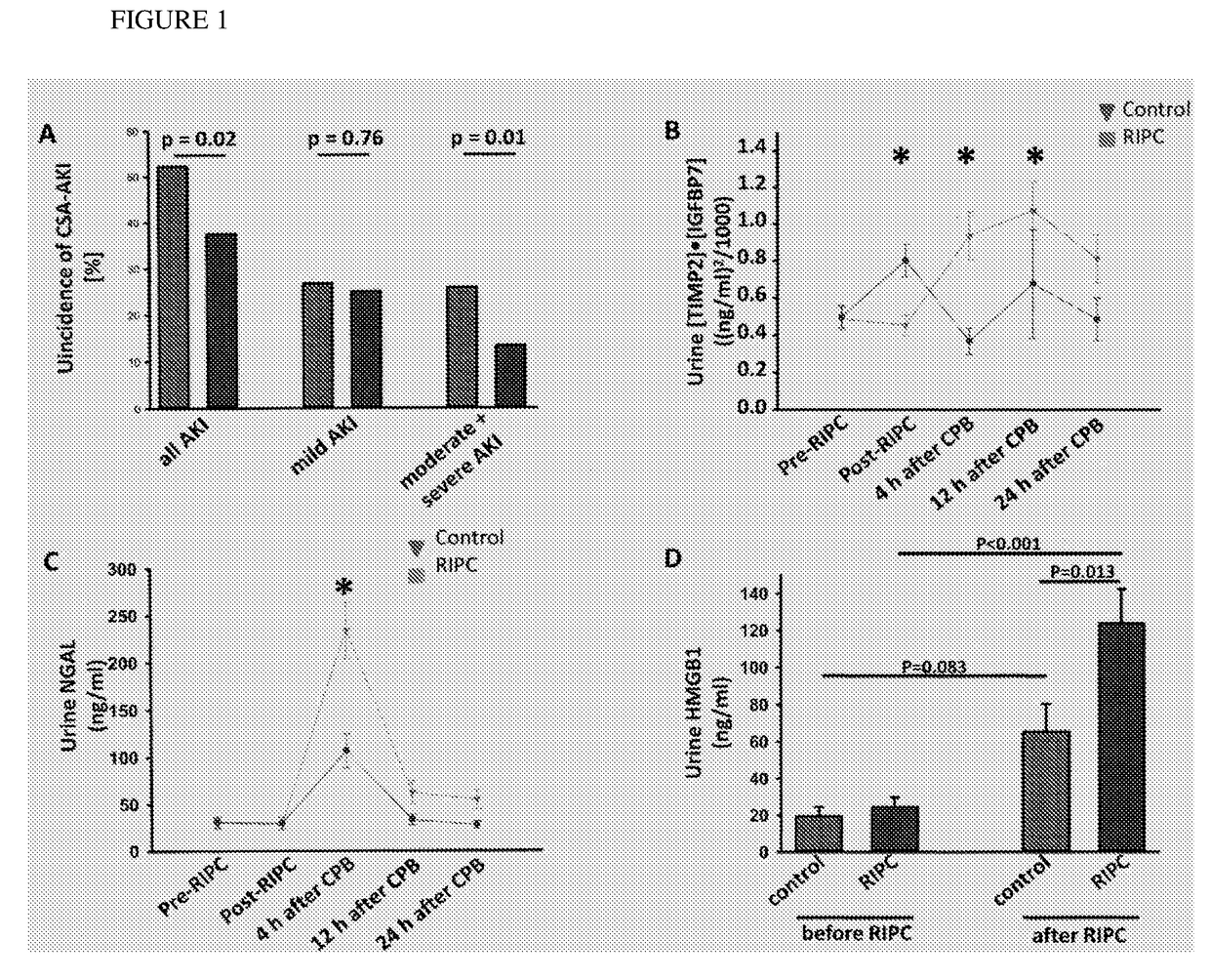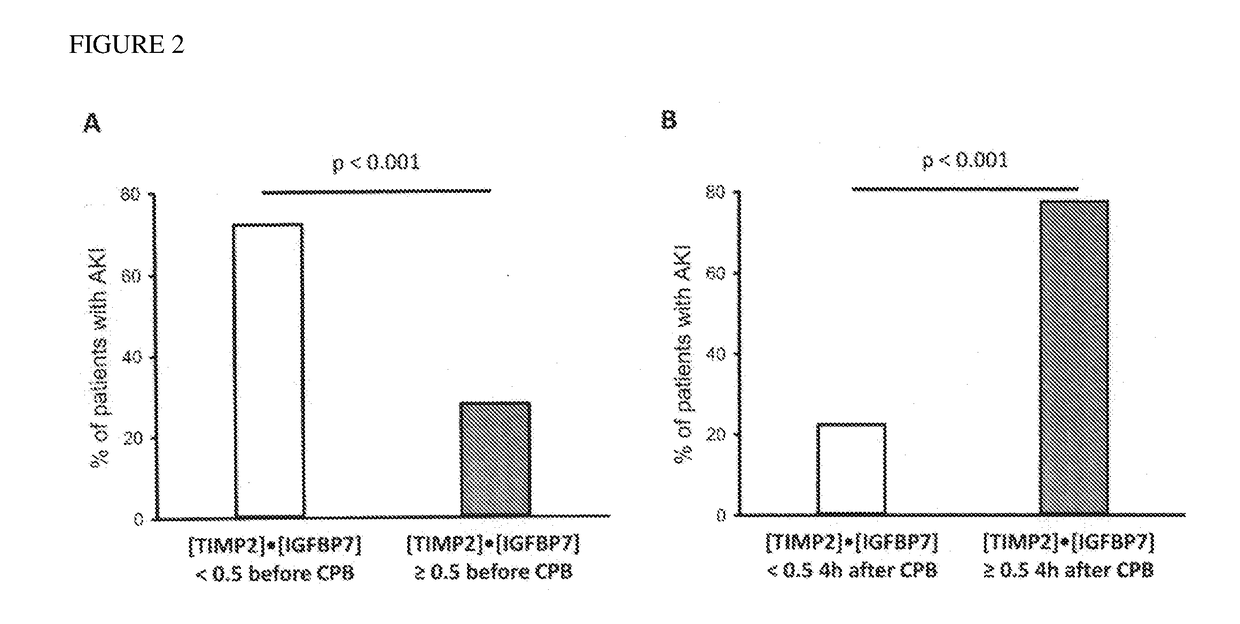Methods and compositions for diagnosis and prognosis of renal injury and renal failure
a technology of renal injury and prognosis, applied in the field of methods and compositions for diagnosis and prognosis of renal injury and renal failure, can solve the problem of increasing and achieve the effect of reducing the risk of acute renal injury of patients
- Summary
- Abstract
- Description
- Claims
- Application Information
AI Technical Summary
Benefits of technology
Problems solved by technology
Method used
Image
Examples
example 1
ign and Participants
[0099]After obtaining approval from the institutional review boards at each site, a prospective, multi-center, double-blind, randomized, controlled trial was undertaken. Consecutive patients were approached for enrollment during preadmission consultations and provided written informed consent. The study was conducted according to the principles of the Declaration of Helsinki. Eligible patients were adults at high risk for AKI who underwent cardiac surgery with the use of cardiopulmonary bypass (CPB) at the Universities of Münster, Tübingen, Freiburg or Bochum (Germany), between August 2013 and June 2014. A Cleveland Clinic Foundation score of 6 or more was used to define patients at high risk for AKI. The score is composed of different risk factors, including patient characteristics, co-morbidities, and type of surgery. Exclusion criteria were acute myocardial infarction up to 7 days before surgery, age <18 years, off-pump heart surgery, pre-existing AKI, kidney ...
example 2
s
[0102]Anaesthesia was induced according to the standard of care at each center and maintained with volatile anesthetics, because propofol may interfere with RIPC. The management of CPB was performed as follows: the mean arterial blood pressure of 60-70 mmHg, the use of non-pulsatile CPB, α-stat acid-base management to regulate carbon dioxide tension, haematocrit values 25-30%, blood glucose levels <200 mg / dL, and the use of arterial line filters.
[0103]After induction of anesthesia and before skin incision RIPC was performed. This consisted of three cycles of 5 min inflation of a blood-pressure cuff to 200 mm Hg (or at least to a pressure 50 mmHg higher than the systolic arterial pressure) to the left upper arm followed by 5 min reperfusion with the cuff deflated. In patients assigned to the control group, sham-RIPC intervention was induced by three cycles of right upper limb ‘pseudo’-ischemia (low pressure: 5 min blood-pressure cuff inflation to a pressure of 20 mm Hg and 5-min cuf...
example 3
[0104]The primary endpoint was the occurrence of AKI within the first 72 hrs after surgery. AKI was defined according to the KDIGO criteria. Secondary endpoints were severe AKI (stage 2-3) within 72 hrs, 30-day all-cause mortality, need for renal replacement therapy (RRT) during index hospitalization, duration of ventilator support, length of stay in the intensive care unit (ICU), length of hospital stay, concentrations of various urinary biomarkers in the first 24 hours after surgery, and perioperative myocardial infarction and stroke during the index hospital stay.
[0105]Clinical variables were abstracted from the medical record. Initiation of renal replacement therapy (RRT) was at the discretion of the ICU clinicians blinded to treatment assignment. Criteria for RRT were not included in the protocol. Perioperative myocardial infarction and stroke were defined as described in the art.
PUM
 Login to View More
Login to View More Abstract
Description
Claims
Application Information
 Login to View More
Login to View More - R&D
- Intellectual Property
- Life Sciences
- Materials
- Tech Scout
- Unparalleled Data Quality
- Higher Quality Content
- 60% Fewer Hallucinations
Browse by: Latest US Patents, China's latest patents, Technical Efficacy Thesaurus, Application Domain, Technology Topic, Popular Technical Reports.
© 2025 PatSnap. All rights reserved.Legal|Privacy policy|Modern Slavery Act Transparency Statement|Sitemap|About US| Contact US: help@patsnap.com



